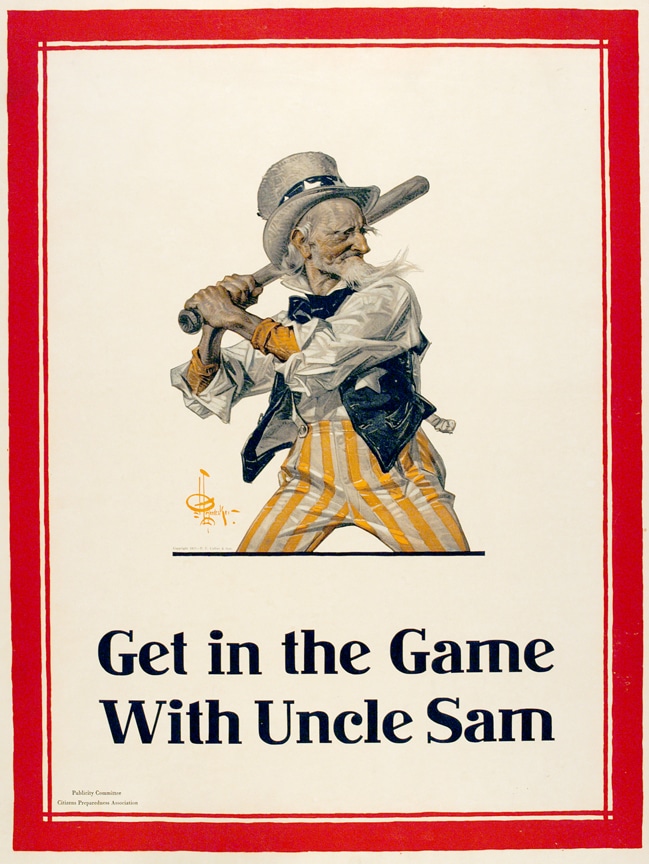Strong National Museum of Play has many historical artifacts that help to tell the story of play in the wider context of American history. One of my favorite posters in the museum’s collection shows how baseball intersected with American history in the early twentieth century.
Baseball was widely recognized as America’s national sport by the late 1800s, and it continued to grow in popularity in the early twentieth century. Two separate major leagues were in place in 1901, and by 1903 the World Series was established. Baseball was here to stay.
 Meanwhile, then-president Woodrow Wilson, who had won reelection in 1916 on an anti-war platform, faced the need for American participation in the terrible “Great War” raging in Europe. He and his cabinet knew that American involvement loomed. But how could the government convince the American public that this was necessary? One idea was to create a poster that urged Americans to metaphorically “Get in the Game,” along with their patriotic national symbol, Uncle Sam.
Meanwhile, then-president Woodrow Wilson, who had won reelection in 1916 on an anti-war platform, faced the need for American participation in the terrible “Great War” raging in Europe. He and his cabinet knew that American involvement loomed. But how could the government convince the American public that this was necessary? One idea was to create a poster that urged Americans to metaphorically “Get in the Game,” along with their patriotic national symbol, Uncle Sam.
Artist J.C. Leyendecker (1874-1951) designed the poster, commissioned by the Publicity Committee of the Citizens Preparedness Association, a pro-war organization with federal support which also sponsored “preparedness parades” and other nationalistic activities. Leyendecker himself emigrated from Germany at age eight and was approaching the pinnacle of his career in 1917 when he created this work.
The poster just preceded James Montgomery Flagg’s famous “I Want You” image of Uncle Sam, which later became the best-known likeness of the country’s unofficial symbol. Leyendecker’s version, in spite of his baseball bat, is possibly less affable to contemporary eyes than Flagg’s friendlier Sam. But the bat he holds connected him to many Americans, who perhaps then decided that America should “get in the game.”



